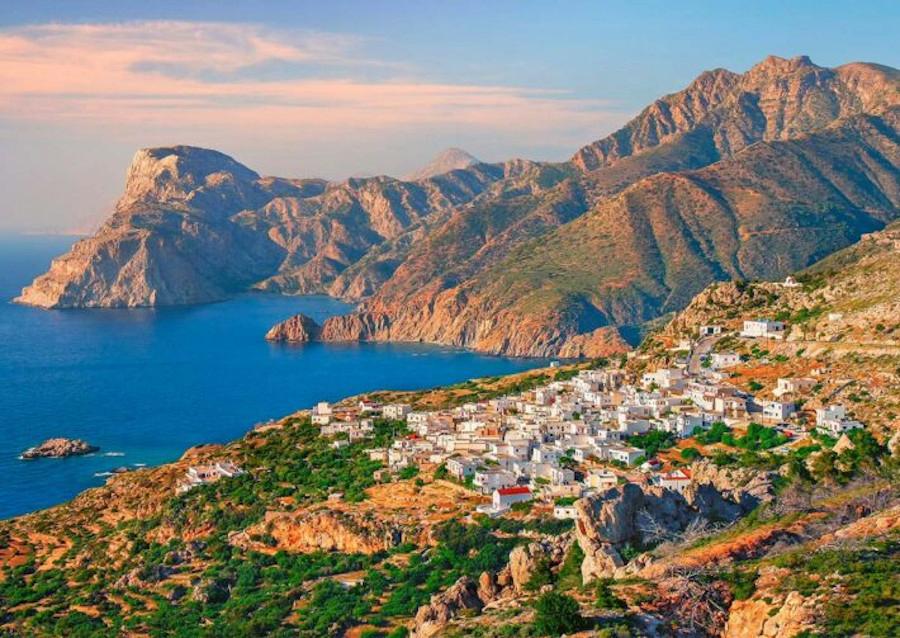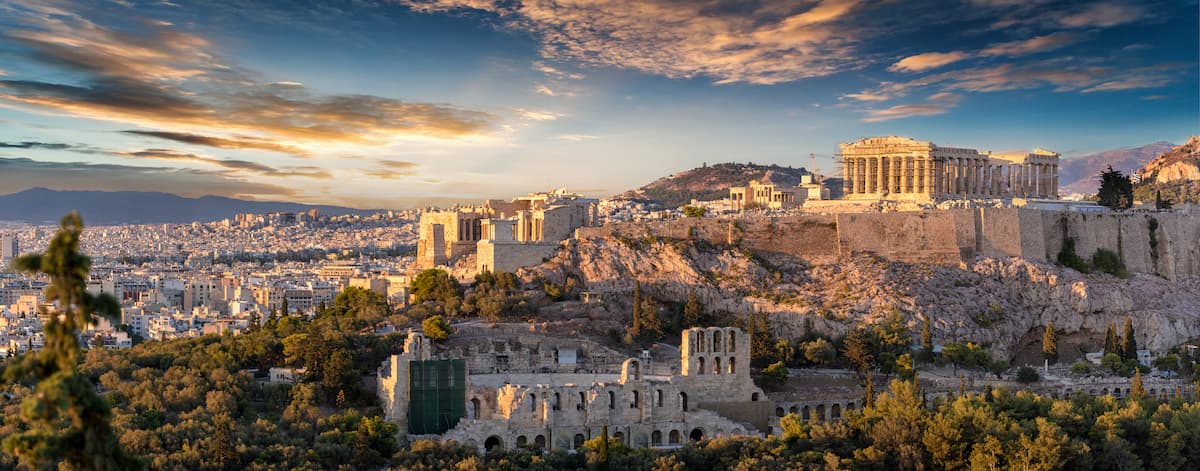Because of its remote location, local people have preserved many traditions including their dialect of the Greek language, and distinctive clothing with rich traditional costumes.
In general, all the Dodecanese societies are known for the special and respected role women occupy in the community. But this is even more true on Karpathos, an island where it is as if women rule and men have a secondary role. When one looks at photographs of people on Karpathos, one sees mostly women: Women in beautiful traditional garb on religious feast days; a woman baking bread; a woman leading a donkey along a path.
The most characteristic is the village of Olympus. Perched high on a mountain, away from tourists and travellers, it is a place where time seems to have stopped. In Olympus, the woman is without question the cohesive force within the broader family and the village while social life starts from women’s relations.
Gastronomy
Together they knead and bake the island’s famous bread in traditional wood-fired ovens. They also grind wheat and barley in mills to make handmade pasta, such as macarounes (macaroni) with flour and water. The dough strip is cut into 3 cm-long sections, which are then pressed well in their middle with the fingers to create a dent. After drying a little they are boiled and then sauteed with butter. Macarounes are served with tsikomeno (crunchy roasted onion). Pseftomacarona (‘false macaroni’) are bites of stale bread boiled for two to three minutes until soft in salted water and served in the same way as macarounes.
Rarely on an island the size of Karpathos can you find such a wide variety of bread of all kinds and flavours: spicy, onion bread, crunchy paximadikouloura (rusks) with mastic, cumin and white sesame. Tribute bread of a huge size with cumin, nutmeg and black sesame. An essential Christmas supplement is christopsoma (‘Christmas bread’), which are sourdough bread containing cinnamon, mastic, and cloves and sprinkled with sesame seeds. They are usually cross-shaped, and housewives bake them on the eve of the feast. At Easter and even today, women all gather to knead the christokouloures, the characteristic “poulous”, which are thin savoury koulouri (buns) in the figure of eight with a red egg on one end.
Traditional recipes of Karpathos
Kremmydokouloures (spicy onion buns): crispy and delicious, with plenty of spices and lots of onions.
Koulouri (buns), thin and crunchy and sprinkled with plenty of black sesame.
Psilokoulura (small buns, once wedding buns). These are large koulouri, with twelve dough strips placed vertically and horizontally inside so that they intersect to form small squares. Before cooking, they are sprinkled with sesame seeds.
Pita: cabbage pita, onion pita and zimbilia gingerbread, which is a Christmas cake with raisin filling.
Zimbilia, sweet pita with ground raisins, which are the main ingredient of the filling, and together with nutmeg are wrapped in the filo sheet and are baked in wood-fired ovens.
Examples of the good taste and patience of the Karpathian housewife are moschopoungia, stuffed crescent-shaped sweets, very common in all the Dodecanese. With variations in the filling, which contains mainly walnuts, almonds and sesame seeds, and sprinkled with finely powdered sugar.
The sweet of joy is also the Karpathian baklava with almonds, walnuts and many filo layers.
Sisamomeli (with honey and sesame) is offered at weddings to give strength to the groom, but also to the guests.
Great skill on the part of the housewife is required by the psilokoulouri (bun) offered in a basket with sugar lumps.
Takakia: a syrupy fried dessert made in small pieces.
Tourtes are Easter Cakes made with raised dough stuffed with soft sweet mizithra cheese and flavored with dill.
A famous dish served on Easter is byzanti, lamb or goat stuffed with aromatic herbs and rice, and simmered in a covered clay pot.
Anderizia: intestines which, after having been thoroughly washed, are stuffed with rice, pieces of meat and many spices which have first been deep-fried in the pan. The intestines are then sewn to contain their filling and placed in a pot of boiling water to cook. They are then finished by frying in a small quantity of oil to make them crispy and are then placed in the pot together with pieces of pork fat. The dish is eaten plain as an appetizer or as a flavouring and accompaniment to various dishes with legumes or omelettes.
Pihti: pork is primarily a Christmas dish. It is a mixture of pieces of meat and broth that comes from boiling the cleaned and singed (to burn the hair) pork head. Inside abundant spices (laurel, pepper, cumin) and of course, lemon juice harmoniously complement each other.
Chondros is a wedding food comprising coarsely chopped wheat with meat and tomato. It can be cooked with milk as a cream or even plain in water. Before serving it is drizzled with fried onion. It is also served at festivals on the island.
Fish and seafood are plentiful, mainly of a species of squid (‘thrapsalo’), crabs, sea urchins and limpets, while the menoula fish, which looks like a sardine, is preserved pasto. The gastronomic identity of Karpathos is also exemplified by sparos, a type of Mediterranean parrotfish, which is abundant only in the Karpathian Sea. It is worth trying as yiahni or grilled with plenty of ladolemono (lemon and olive oil dressing).




